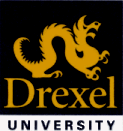
Radiology
Pathway
(curriculum as of Class of 2026)
|
|
Radiology
Pathway |
REVIEW FOR PATHWAY 2025-2026:
The Diagnostic Radiology Discipline-based Pathway is intended for those senior medical students interested in pursuing a career in Diagnostic Radiology. Participation in this discipline-based pathway would assure the student experience in general radiology as well as in designated specialties. Suggested elective courses as described below have been selected based on their close affiliation with imaging studies or their contribution to a greater understanding of disease processes and their manifestation on imaging studies.
Six elective rotations will be offered, a maximum of two which can be in the radiologic subspecialties. These rotations may be served at the home or away sites.
Pathway Director
Matthew Hartman, M.D.
Matthew.Hartman@ahn.org
Drexel Student Coordinator
Heather McLaughlin
215-991-8518
hgm28@drexel.edu
Return to top of
page
The required and suggested elective courses as part of this curriculum provide the interested student with an opportunity to participate in General Diagnostic Radiology and the subspecialties, while continuing to emphasize the importance of general medical education during senior year, through rotations in clinical specialties which are closely affiliated with the imaging counterparts. The student will attain a clear understanding of the imaging studies provided by diagnostic radiology, the order and type of studies essential to an imaging workup and the consultative role of the radiologist.
Required Courses
Emergency Medicine Subinternship
Emergency Medicine Subinternship is required by the University as a senior year
course. During this course we would expect that the student will learn the principles of rapid assessment and stabilization of critically ill and injured patients; learn the initial evaluation and management of the wide range of undifferentiated patient complaints in the Emergency Department; gain skills, specialized examination technique and real-time interpretation of diagnostic studies; participate in common and more advanced procedures.
Required Subinternship Objectives: Radiology Pathway students are required to complete the Medicine, OB/GYN, Pediatrics, or Surgery Subinternship.
By the end of the rotation learners will be able to:
General Diagnostic Radiology
The student in this rotation will likely be exposed to general diagnostic studies including plain film radiology and fluoroscopy as well as multiple radiology subspecialties. The purpose of this rotation is to introduce the student to the wide range of imaging studies provided by diagnostic radiology and to involve the student in the consultative process between diagnostic radiology and the clinical specialties.
Diagnostic Radiology - Subspecialty Electives
Multiple radiology electives may be selected to provide more in-depth exposure to the different aspects of radiology practice. The subspecialties include Vascular & Interventional Radiology, Neuroradiology, Body or Abdominal Imaging, Nuclear Medicine, Breast Imaging, Thoracic Radiology, and Pediatric Radiology. These rotations may be performed at the home or approved away clinical sites. A Radiology Research elective may also be taken at an away site.
Non-Radiology Electives
Pulmonary Medicine, Orthopedic Surgery, Pathology, Neurosurgery, Radiation Oncology, Surgery/Trauma, and Gastroenterology are recommended, chosen to provide valuable background information for a student pursuing a career in Diagnostic Radiology.
A free elective may be chosen, if a student chooses to serve in only one of the radiology subspecialties or in one of the above suggested non-radiology electives.
The standard textbook of Radiology is William Herring's Learning Radiology.
Online resources such at Radiopaedia and learningradiology.com .
Evaluation of the Student
The student's performance in each rotation will be evaluated by supervising physicians, and residents when appropriate, using the standard Drexel University College of Medicine clinical evaluation form. Students not receiving a grade of satisfactory or higher will be counseled and provided with remediation.
Evaluation of 4th year Courses
Upon completion of each rotation, students are encouraged to complete the end-of-rotation evaluation form in DOCSS. Students have the opportunity to provide feedback on the rotation as well as on specific faculty (and residents) with whom they worked in DOCSS. All feedback is de-identified.
Evaluation of the Pathway
Students are encouraged to complete an end-of-year Pathway evaluation for the Pathway. The feedback from this evaluation will help in advising future students more effectively.